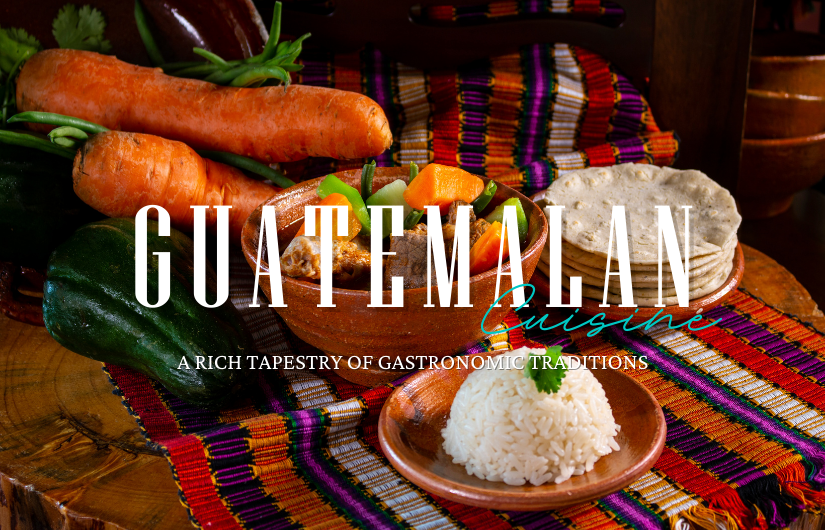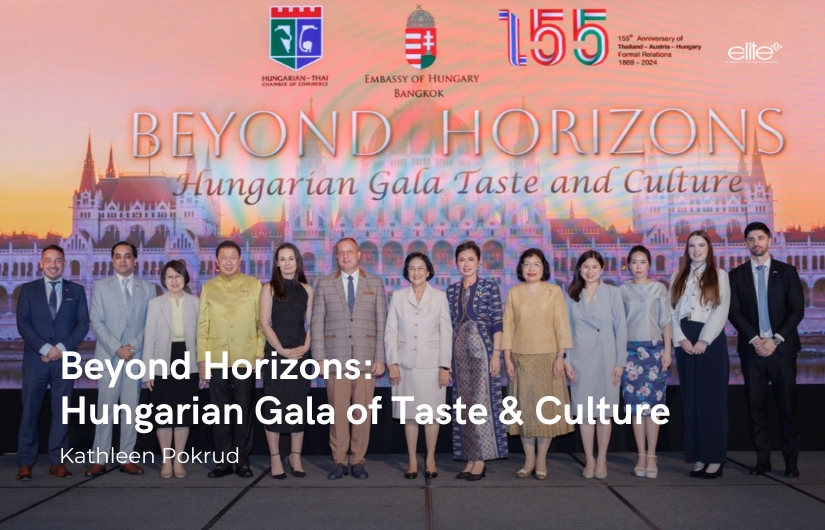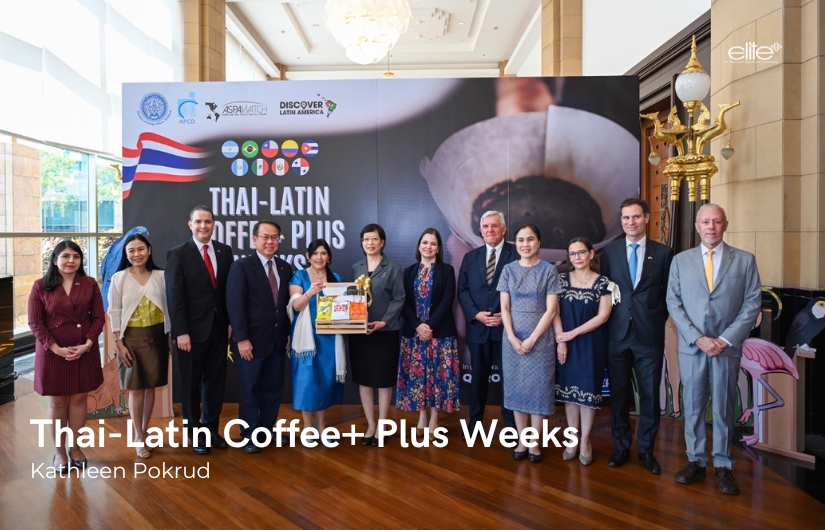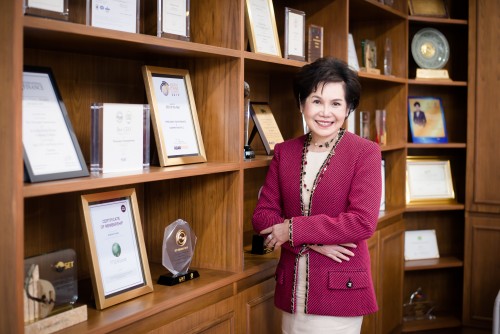Guatemalan Cuisine: A rich tapestry of gastronomic traditions
By Kathleen Pokrud
Guatemala is a country full of exquisite flavours and rich gastronomic traditions. Their cuisine is a unique blend of Mayan, Spanish and African influences that merge into a feast of tastes. I sat down with HE Ambassador Shirley Aguilar to discuss how its Mayan roots followed by the Spanish conquest and later African traditions influenced each era to leave its mark on the fusion of Guatemalan dishes over the centuries.

Ambassador Shirley began by discussing the history of Guatemalan cuisine. “Guatemala is the origin of the great Mayan civilization that stretched from southern Mexico to Honduras, Belize and part of El Salvador. During this period, the Mayans had a diet rich in corn, beans, chilis, squash and spices. Their knowledge of medicinal plants and gastronomy was passed down from generation to generation, giving rise to dishes such as tamales, tortillas and spicy salsas o recados, which are still pillars of Guatemalan cuisine.
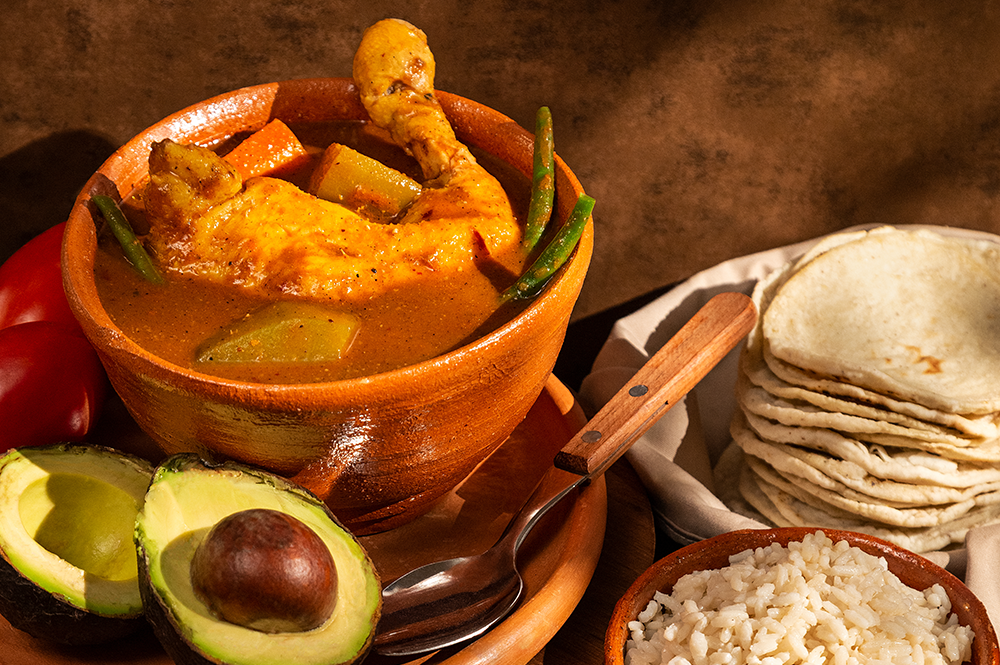
“With the arrival of the Spanish in Mesoamerica in the 16th century, new spices, culinary techniques and ingredients such as rice, onion, garlic and cilantro, meat and wine were introduced. This cultural fusion gave way to dishes such as Pepián, a pork stew. After this, African influence arrived in the 19th century, when Afro-descendants brought with them new waves of ingredients such as banana, coconut, tamarind, and palm oil, which were incorporated into Guatemalan cuisine, further enriching its diversity. Examples are Frijoles negros con coco (black beans with coconut) or Tamal de chipilín, a traditional tamal recipe wrapped in native African chipilín leaves.”

Ambassador Shirley continued to explain, “The uniqueness of Guatemalan gastronomy, aside from being influenced by three different cultures, Guatemala is one of the richest areas on the continent due to its fertile land and location in the Central America Region, surrounded by two different seas, Caribbean and Pacific. On these two coasts we grow different fruits, vegetables and spices used in the preparation of several dishes that contain influences from Mayan, Spanish and contemporary cuisine.
“Guatemalan dishes are characterized by the use of fresh and tasty ingredients that reflect the geographical diversity of the country. From the highlands to the Pacific coast, Guatemala offers a variety of products that are the basis of its traditional cuisine. Among its most emblematic ingredients are chili, beans, avocados, tomatoes, corn, and chirmol, a typical sauce that usually accompanies meat and fish. These ingredients are used in a wide variety of dishes, from stews and soups to condiments.”
She continued, “Most Guatemalan cuisine has a heavy Mayan influence. Ancient Maya diet focused on three domesticated crops: maize, squash and beans, which are commonly referred to in North America nowadays as the "Three Sisters". Among the three, maize was the central component of the diet of the ancient Maya and figured prominently in Maya mythology and ideology. As a result, nowadays all sorts of corn-based food can be found in Guatemala. The most typical is Tortilla – a flat piece of maize-dough warmed up on a griddle.
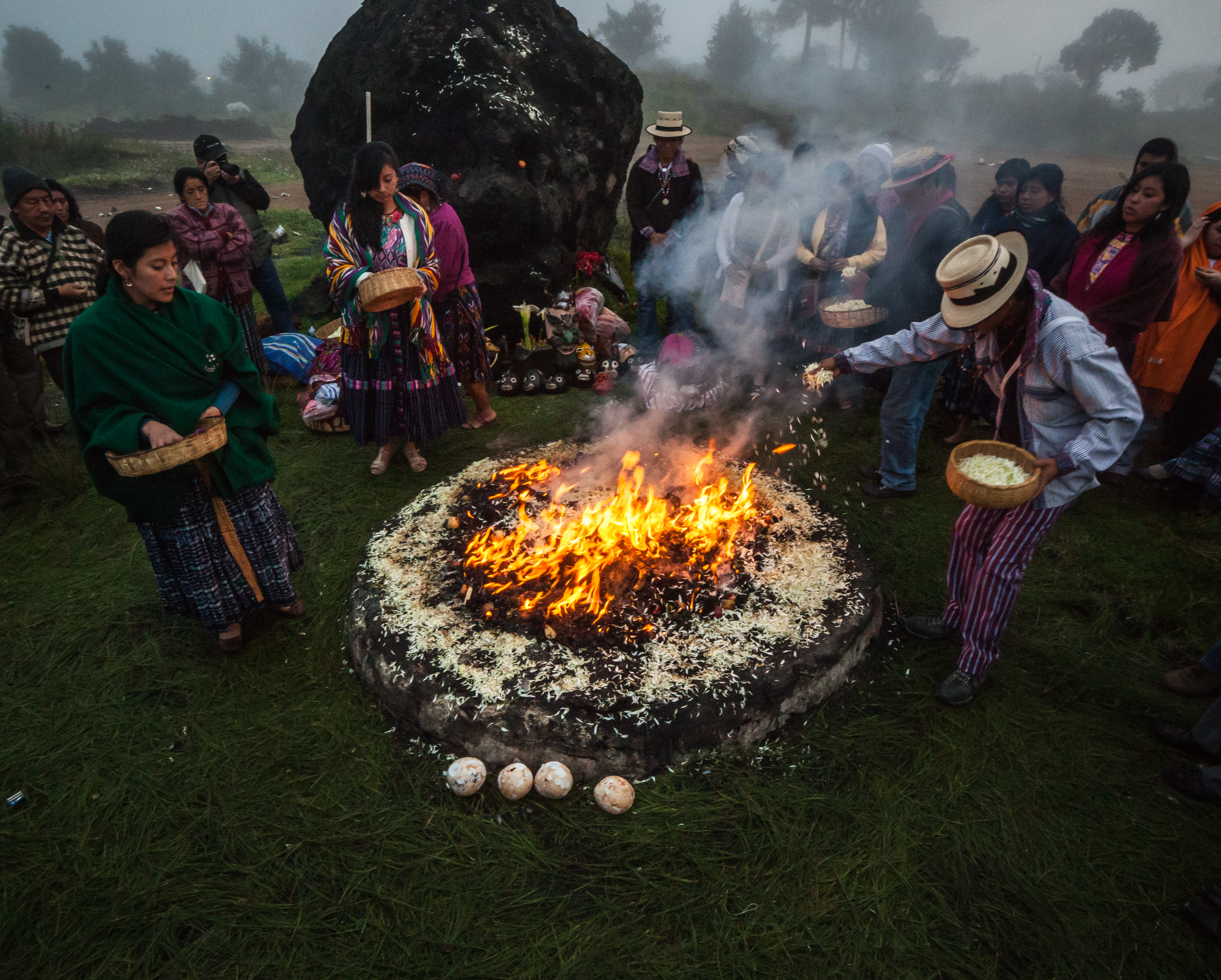
Apart from the Three Sisters that were part of ancient Mayan diet, Cocoa played an enormous importance for the native and aboriginal peoples who used it as food and currency while giving it religious meaning to the people. Cocoa was known to be a sacred fruit as its seeds were used to make the sacred water of gods, so it was mainly used to make beverages and served only to the elite and rulers. The Maya prepared a thick, bitter liquid called xocoatl or chocolhaa which was served frothy and consumed in ceremonies and rituals, as well as on special occasions. Subsequently, Spanish influence played an important part in introducing other ingredients such as bread, coffee and rice.”
Even though Guatemala may be a small country in terms of territory, but it boasts an incredible diversity of climates and microclimates. From tropical lowlands to temperate highlands, the range of weather conditions and environments across the country is truly impressive, the landscape and climate vary, which resulted in regional diversity. Ambassador Shirley elaborated, “In the northern region, there are two predominant large linguistic groups, the Q'eqchi' and the K'iche'. Among the Q'eqchi'es, the traditional dish known as Kaq-ik stands out, which is a broth prepared with turkey served in a bowl, while the K'iche' flavour stands out in the preparation of foods seasoned with spices and chili. Moreover, on the Atlantic coast, the inhabitants’ ancestors are of African origin, called Garifunas, who learned Spanish and then settled permanently on the coasts of Honduras, Belize and Guatemala. Its people inherited certain culinary traditions, such as Casabe (cassava bread), and Tapau or Tapado, a soup made from coconut milk with seafood and plantain.

“The southern region is dominant with seafood products, and livestock tradition. Meat is highly appreciated such as Pata broth, rabbit and duck stew, and Morongas (blood sausages). In the eastern region, the inhabitants of the eastern region emphasize meat-based products such as Chicharrones.
“In the western region, the gastronomy varies. The components of the Recado, or salsa, generally includes tomatoes ground on stones and cooked in clay pots. Recado is different from other sauces since the preparation is very special, blending a mixture of aromatic ingredients of mestizo origin, which undergo a very characteristic process of ancient Mayan cuisine.”
As our interview drew to a close, Ambassador Shirley proudly reiterated, “Nowadays, the modern chefs in Guatemala are reinterpreting traditional dishes in creative and innovative ways, using locally sourced ingredients and blending traditional flavours with modern techniques. Modern Guatemalan cuisine features ingredient innovation with chefs experimenting with indigenous ingredients like chayote, pepitoria (pumpkin seeds) and jocotes (a type of fruit) in new and inventive ways. Our fusion cuisine is created by chefs blending traditional Guatemalan flavours with influences from other cuisines such as Asian or European.
“Modern Guatemalan dishes often feature creative presentation techniques to elevate the dining experience. Many modern Guatemalan chefs are emphasizing sustainability by using locally sourced, organic ingredients and supporting small-scale farmers and producers. Guatemala City has a growing fine dining scene where chefs are pushing boundaries and creating high-end, modern interpretations of traditional dishes. To sum up, modern Guatemalan cuisine reflects a dynamic culinary scene that honours tradition while embracing innovation and creativity.”
Key representative dishes
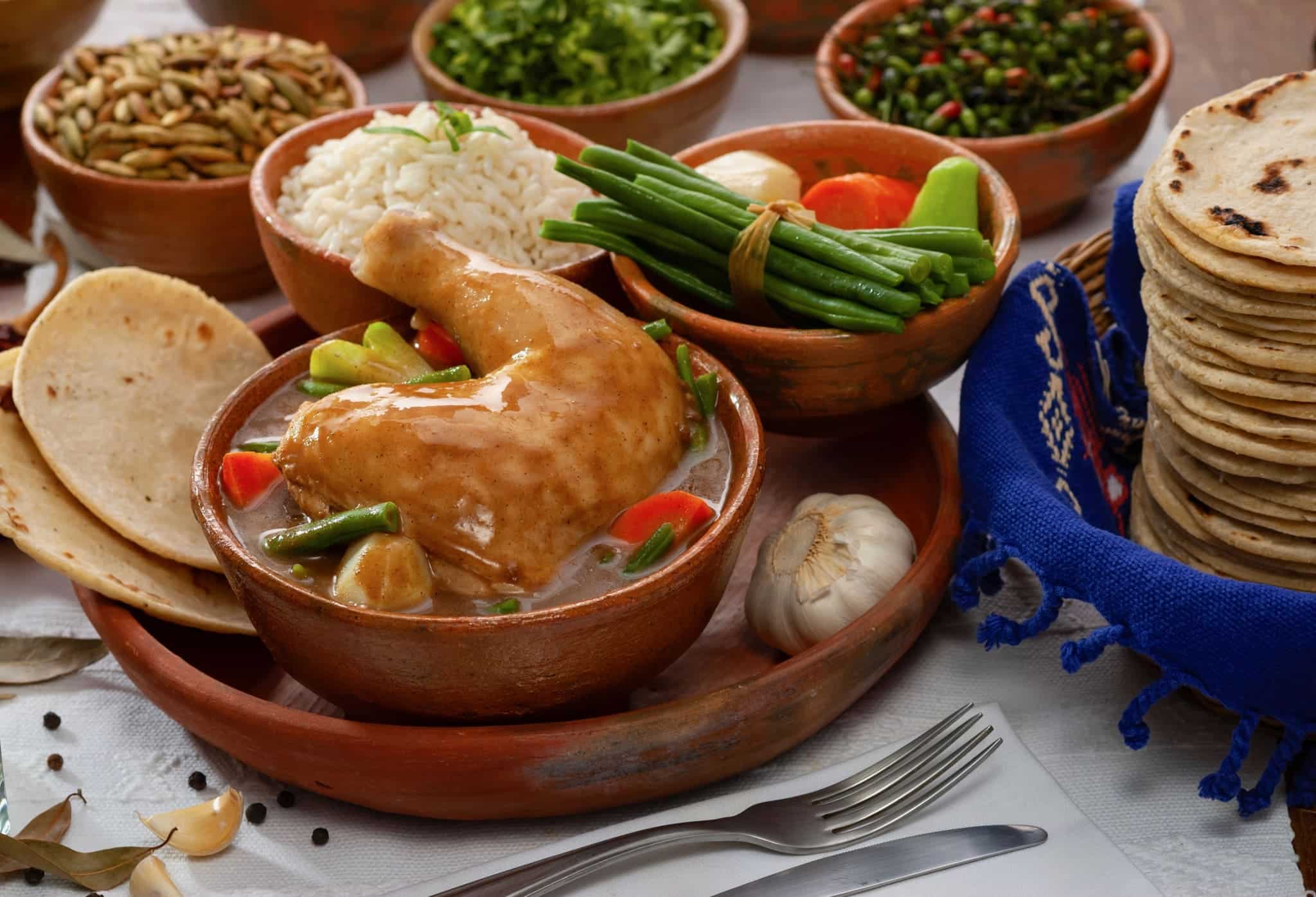
Guatemalan Recados, a kind of curry made from a wide variety of ingredients, including herbs, spices, chilies, seeds, fruits and vegetables. Recados arose from the need to enhance the flavours of food and to take advantage of the ingredients available in Guatemala's natural environment. Each region has its own variants such as red recado, black, white and green; each with its own flavours and uses. In the past, recados were made by hand, using traditional tools such as metates and mortars to grind the ingredients and mix them carefully. This manual and meticulous process gave the recados a particular texture and flavour, full of authenticity and character. Some recados are roasted before grinding, which gives them a distinctive smoky aroma and flavour. Others are made from fresh herbs, whose essential oils are carefully extracted to enhance the flavour of the dishes. Today, recados continue to be a fundamental and representative element of Guatemalan gastronomy as it represents the land, ancestors and ancestral traditions.
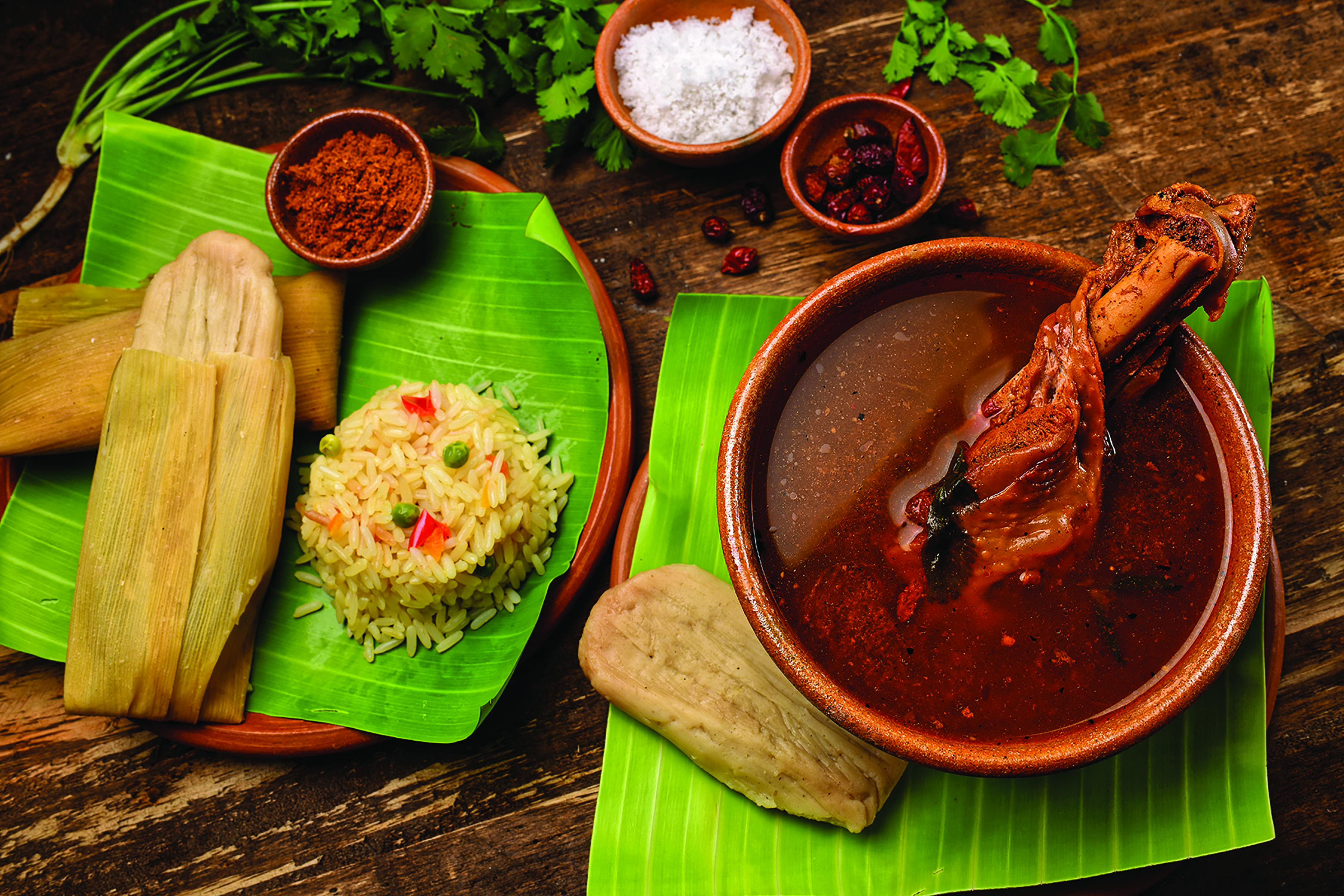
Tamal is the most emblematic dish of Guatemalan cuisine, made with corn dough filled with meat, vegetables and sauce, wrapped in corn husks and steamed.
_1544685647.png)
Another good example of ancestral gastronomic meal is Kaq Ik is a traditional dish from Cobán, Alta Verapaz, my home town and it is one of the most iconic meals of our region. This delicious turkey soup, seasoned with local spices and chili peppers, offers a unique and flavorful taste that I am sure you will love! I invite you to visit Guatemala and explore more of our rich culture and vibrant gastronomy. There is so much to discover in every bite!


